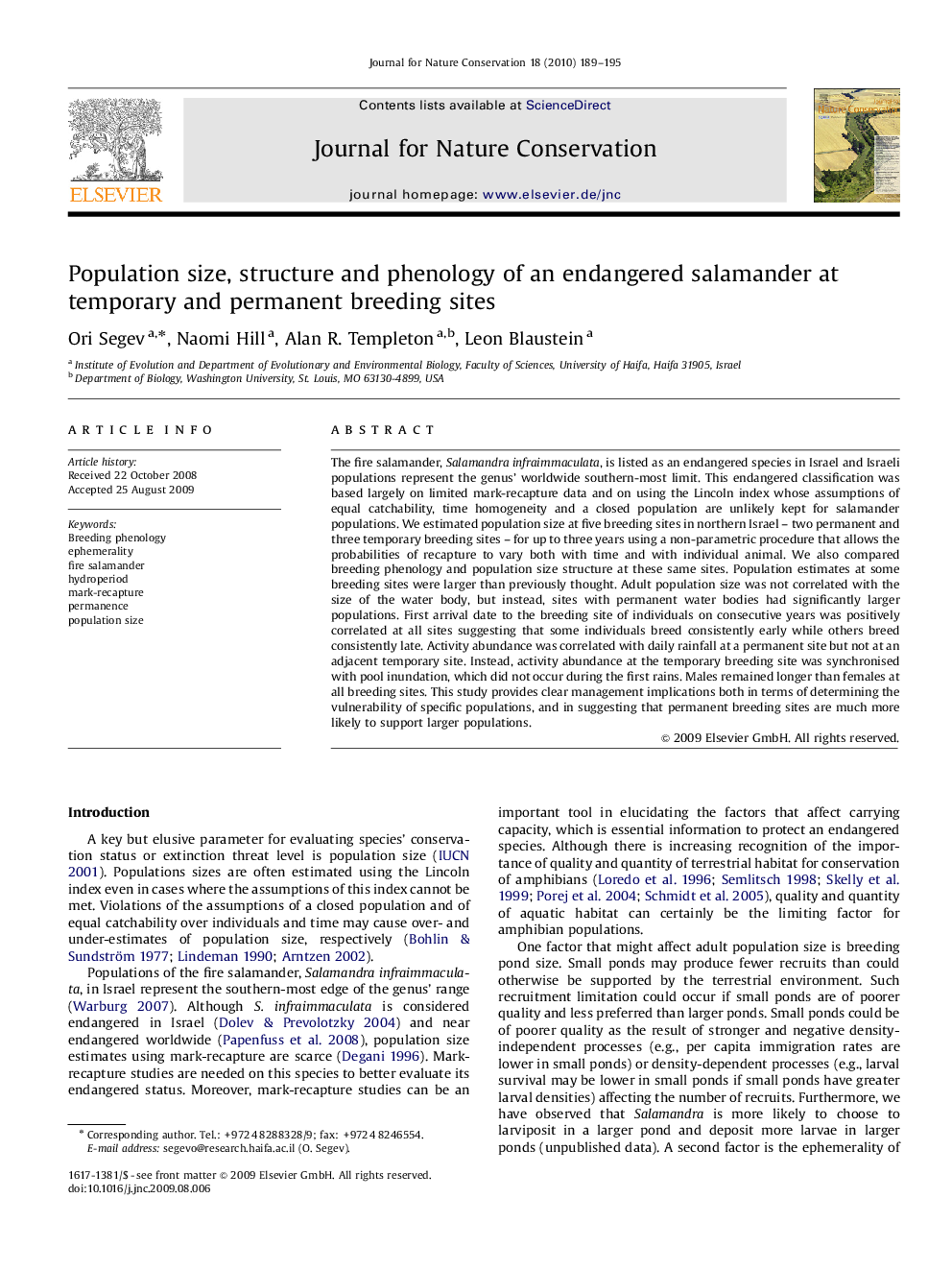| کد مقاله | کد نشریه | سال انتشار | مقاله انگلیسی | نسخه تمام متن |
|---|---|---|---|---|
| 4400236 | 1306925 | 2010 | 7 صفحه PDF | دانلود رایگان |

The fire salamander, Salamandra infraimmaculata, is listed as an endangered species in Israel and Israeli populations represent the genus’ worldwide southern-most limit. This endangered classification was based largely on limited mark-recapture data and on using the Lincoln index whose assumptions of equal catchability, time homogeneity and a closed population are unlikely kept for salamander populations. We estimated population size at five breeding sites in northern Israel – two permanent and three temporary breeding sites – for up to three years using a non-parametric procedure that allows the probabilities of recapture to vary both with time and with individual animal. We also compared breeding phenology and population size structure at these same sites. Population estimates at some breeding sites were larger than previously thought. Adult population size was not correlated with the size of the water body, but instead, sites with permanent water bodies had significantly larger populations. First arrival date to the breeding site of individuals on consecutive years was positively correlated at all sites suggesting that some individuals breed consistently early while others breed consistently late. Activity abundance was correlated with daily rainfall at a permanent site but not at an adjacent temporary site. Instead, activity abundance at the temporary breeding site was synchronised with pool inundation, which did not occur during the first rains. Males remained longer than females at all breeding sites. This study provides clear management implications both in terms of determining the vulnerability of specific populations, and in suggesting that permanent breeding sites are much more likely to support larger populations.
Journal: Journal for Nature Conservation - Volume 18, Issue 3, August 2010, Pages 189–195